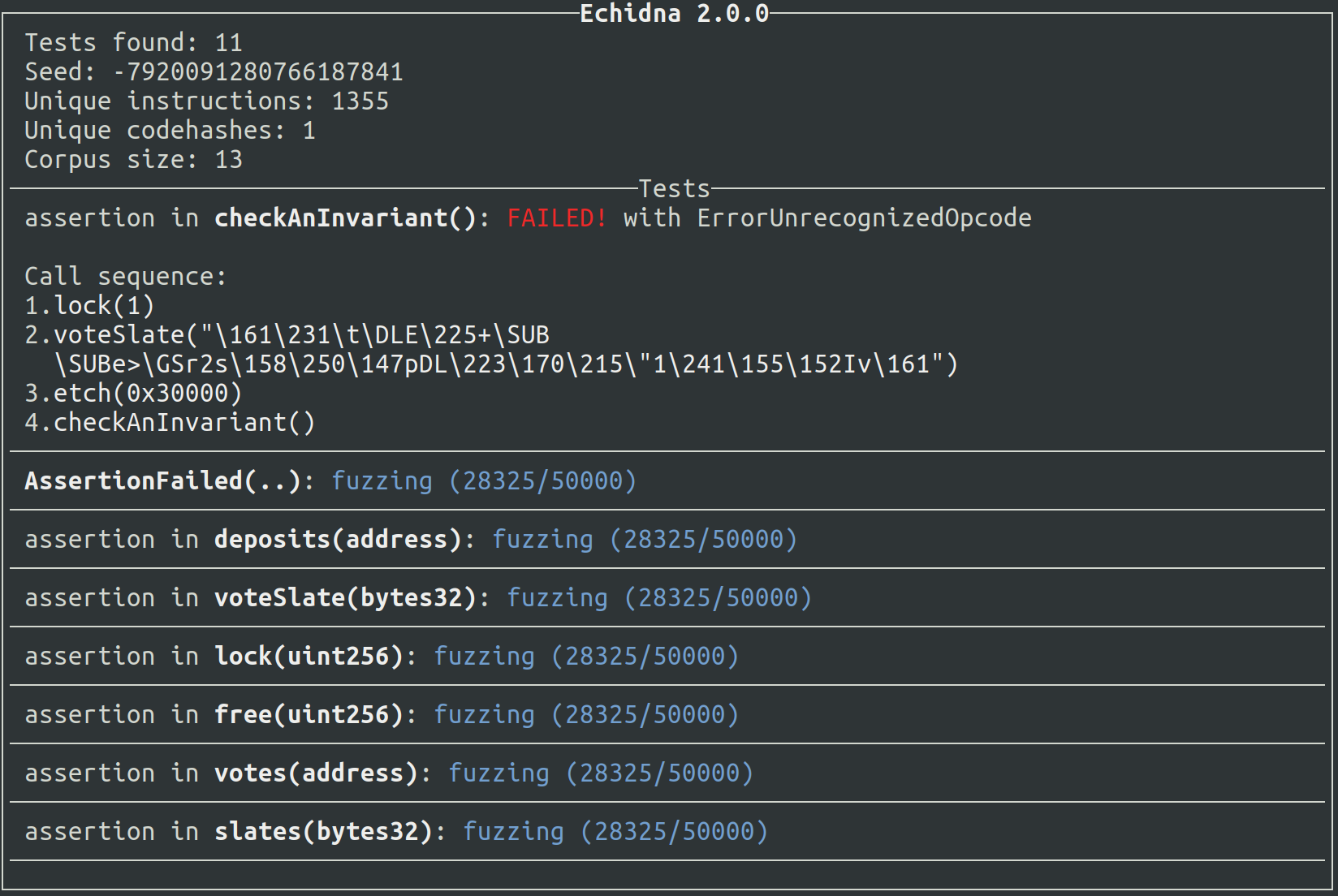Fuzzing with Echidna: PART 1

Hello folks, This is going to be a series of blogs where we will be learning about the Echidna tool for fuzzing. This is an introductory blog where we will be learning some basics. In the upcoming weeks, we will how to fuzz like a pro with echidna. At the end of this series, you will be able to do your own invariants.
Echidna:
Echidna is a smart contract fuzzing tool developed and maintained by Trail of bits. It is known for its unique ‘property-based fuzzing’ which tries to falsify user-defined invariants (properties) instead of looking for crashes like a traditional fuzzer.
what is fuzzing?
In traditional fuzz testing developers will throw a random input to the program and will be looking for crashes, memory leaks, etc.
In simple words stress the program with random inputs.
But in the case of smart contracts, we don't have crashes. Instead, the smart contract auditor will be writing some invariants (properties) to test. So in the web3 world, It is called as Property-based testing.

why should you do fuzz testing?
Fuzz testing is an important technique for discovering vulnerabilities in smart contracts, as it helps to identify unexpected behaviors and potential security issues. There are several reasons why you should perform fuzz testing in smart contracts:
- Unpredictable behavior: Smart contracts, unlike traditional software, run on decentralized networks, making it harder to predict how they will behave in different scenarios. Fuzz testing helps to uncover such unpredictable behaviors and potential security issues.
- Complexity: Smart contracts can be complex, and traditional testing methods may not be enough to uncover all the potential issues. Fuzz testing helps to find edge cases and unexpected behaviors that may be difficult to identify with other testing methods.
- Immutable code: Once a smart contract is deployed on a blockchain, its code is immutable, making it difficult to fix any security issues that are discovered after deployment. Fuzz testing helps to identify security issues before deployment, reducing the risk of attack and the potential for loss of funds.
- Automated testing: Fuzz testing is automated, which means that it can test a large number of scenarios in a short amount of time. This helps to find vulnerabilities that may have been missed by manual testing.
What Echidna will do?
When you run Echidna on a smart contract, it performs a series of tests on the contract to identify potential security issues. These tests include:
- Fuzz testing: Echidna uses random input generation to test the contract in a large number of scenarios, uncovering unexpected behaviors and potential security issues.
- Symbolic execution: Echidna uses symbolic execution to analyze the behavior of the contract and identify possible vulnerabilities.
- Property-based testing: Echidna uses property-based testing to generate random inputs and test the contract against specific properties and invariants.
Echidna provides a detailed report of the results of these tests, including any vulnerabilities or security issues that it has identified.
